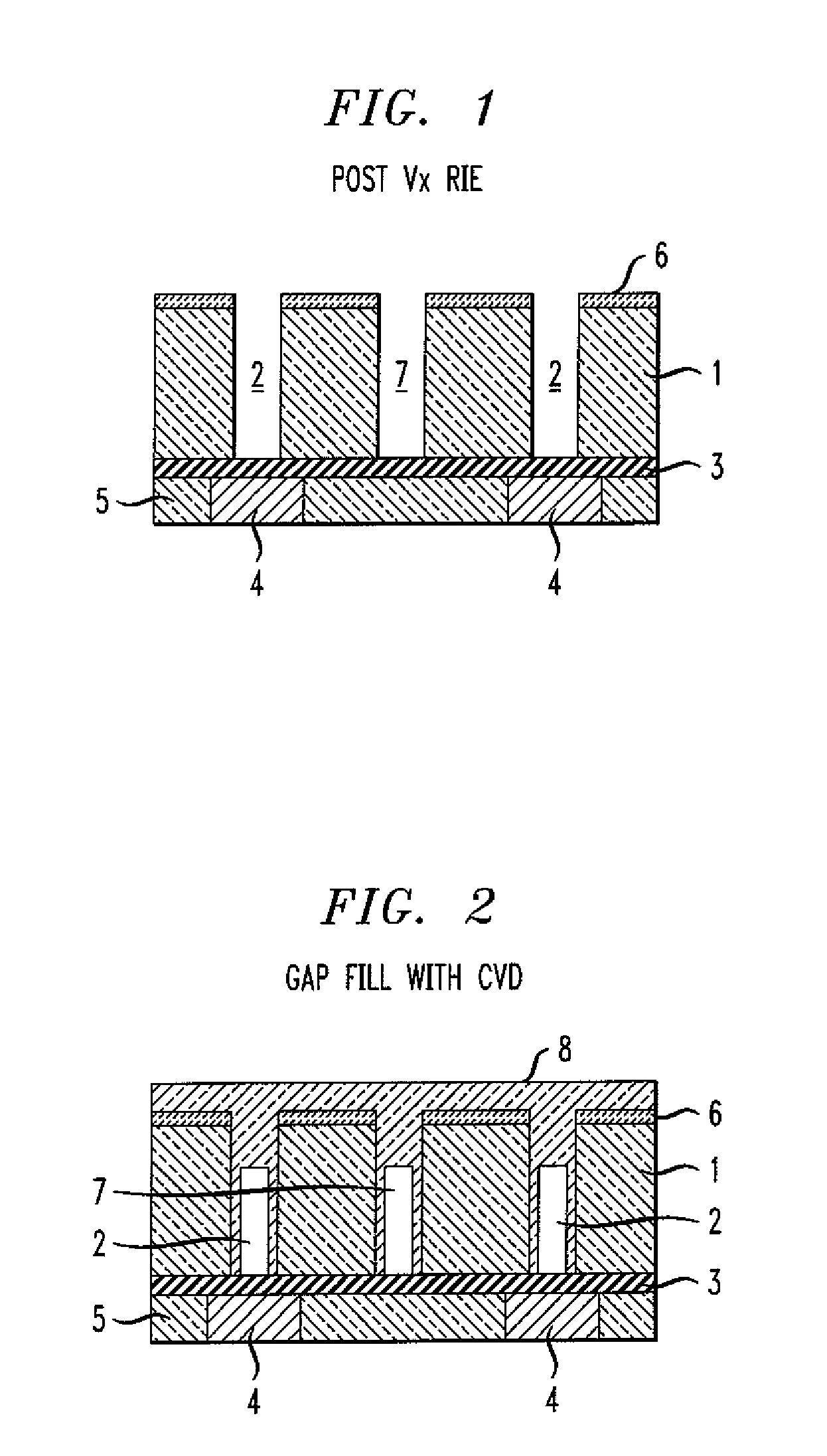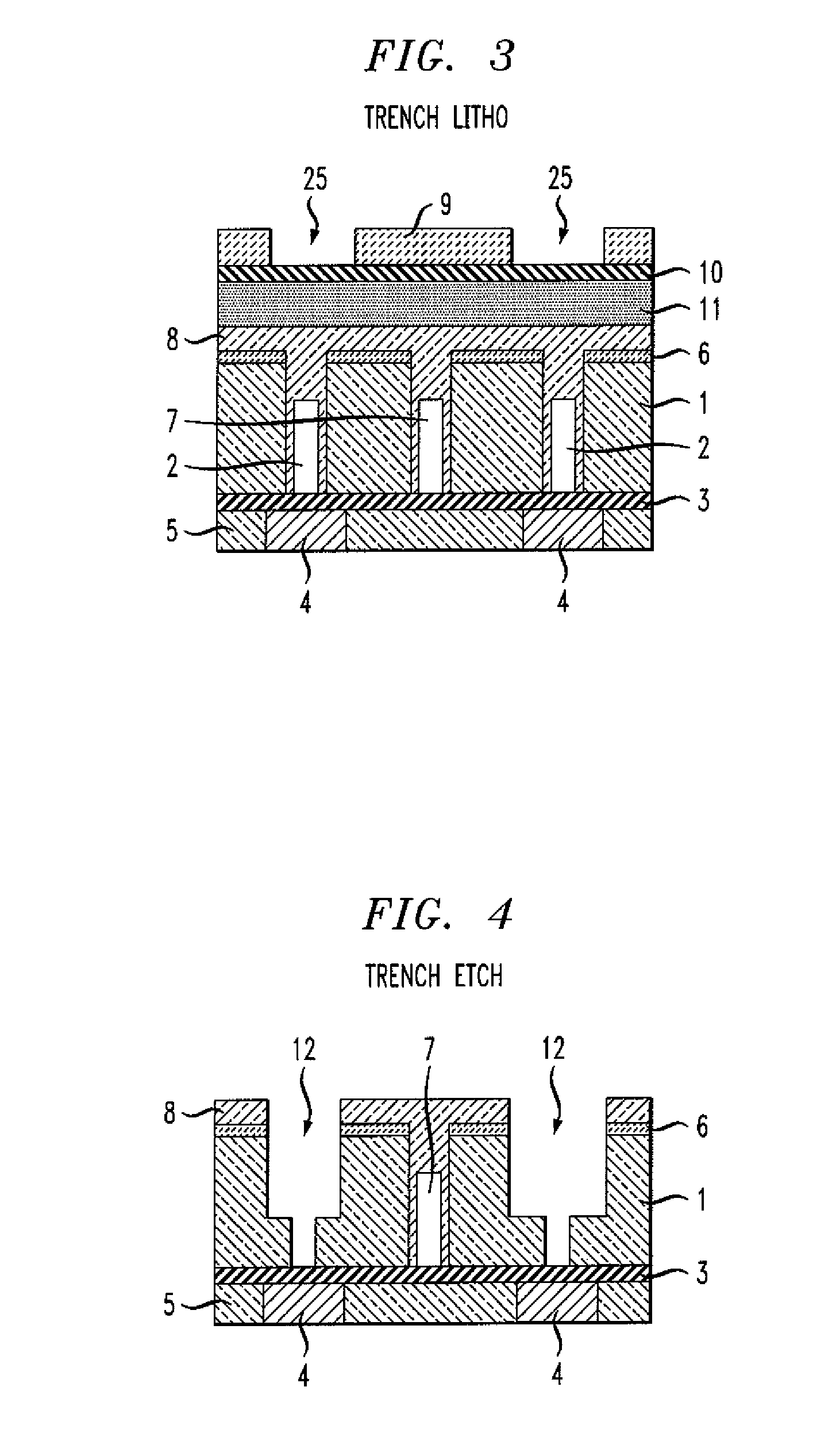Circuit Structure with Low Dielectric Constant Regions and Method of Forming Same
a circuit structure and dielectric constant technology, applied in the field of circuit structures, can solve the problems of difficult integration of porous materials with other beol module processes, low mechanical properties of most porous materials, and inability to offer reasonable coverage on the surface of porous dielectrics by physical vapor deposition (pvd) diffusion barrier deposition technology, etc., to achieve low dielectric constant and reduce parasitic capacitance
- Summary
- Abstract
- Description
- Claims
- Application Information
AI Technical Summary
Benefits of technology
Problems solved by technology
Method used
Image
Examples
Embodiment Construction
[0015]An exemplary method of manufacturing a circuit (such as a microelectronic circuit) will now be described with respect to the figures, in which like reference characters are used throughout to refer to like elements, unless otherwise noted. With reference to FIG. 1, which is a cross-sectional view (as are FIGS. 1-6), one step of the method includes providing a first wiring level comprising first wiring level conductors 4 separated by a first wiring level dielectric material 5. A first dielectric layer 1 of first dielectric layer material is formed above the first wiring level, the first dielectric layer 1 having a plurality of interconnect openings 2 and a plurality of gap openings 7. Optionally, a capping layer 3 can be formed over the first wiring level prior to forming the first dielectric layer, and also, a capping layer 6 can optionally be formed over the first dielectric level. Note that interconnect openings 2 are formed over conductors 4, while gap openings 7 are not. T...
PUM
 Login to View More
Login to View More Abstract
Description
Claims
Application Information
 Login to View More
Login to View More - R&D
- Intellectual Property
- Life Sciences
- Materials
- Tech Scout
- Unparalleled Data Quality
- Higher Quality Content
- 60% Fewer Hallucinations
Browse by: Latest US Patents, China's latest patents, Technical Efficacy Thesaurus, Application Domain, Technology Topic, Popular Technical Reports.
© 2025 PatSnap. All rights reserved.Legal|Privacy policy|Modern Slavery Act Transparency Statement|Sitemap|About US| Contact US: help@patsnap.com



